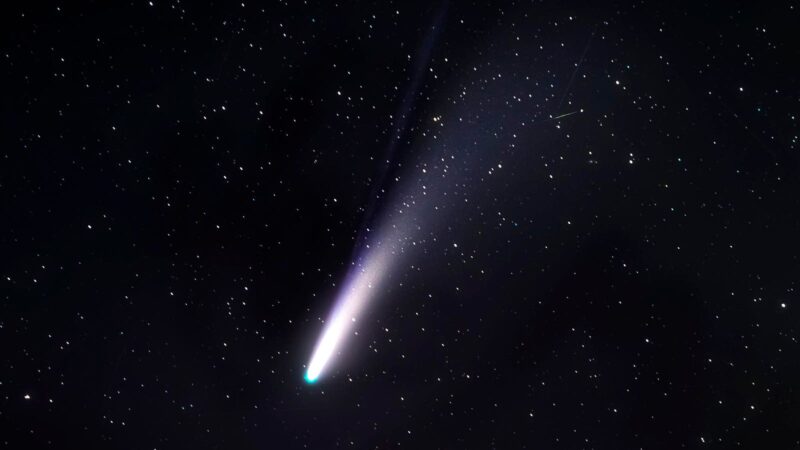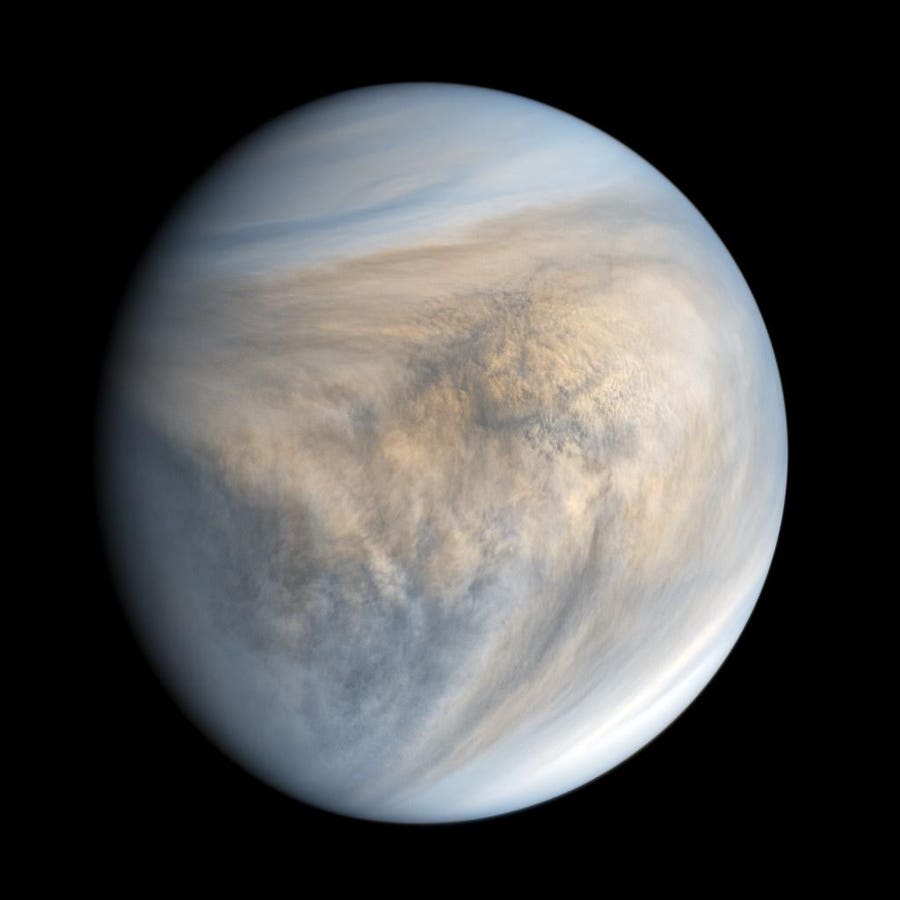C/2020 F3 (NEOWISE), or Comet NEOWISE, is a retrograde comet with a near-parabolic orbit discovered on March 27, 2020. Taken in Antequera, Málaga. Andalusia. South of Spain.
getty
Each Monday, I pick out North America’s celestial highlights for the week ahead (which also apply to mid-northern latitudes in the Northern Hemisphere). Check my feed every day this month for a daily “comet tracker” with finder charts and tips for viewing Comet Lemmon and Comet SWAN from mid-northern latitudes. Also read How To Photograph The Green Comets, Best Stargazing Apps For Finding The Comets and 25 Dark Sky Parks In The U.S. To See The Comets. latitudes.
The Night Sky This Week: Oct. 20-26, 2025
Seasonal signposts in the stars abound this week, as Orion’s Belt begins its climb in the east to bring the bright stars of winter back into view. In between, the Orionid meteor shower delivers one of the year’s best “shooting stars” displays under perfect new moon conditions, while a crescent moon mingles soon after with Mercury, Mars and red supergiant star Antares.
This week could also bring a great opportunity to see not one, but two comets — Comet Lemmon (C/2025 A6) and Comet SWAN (C/2025 R2) as they both make their closest approaches to Earth.
Here’s everything you need to know about the night sky, stargazing and astronomy this week:
Monday, Oct. 20-Tuesday, Oct. 21: Orionids Meteor Shower Peaks And Comet SWAN (C/2025 R2)
On Tuesday, the moon reaches its new phase, leaving the night skies completely dark. That’s perfect timing for the Orionid meteor shower, which peaks overnight with about 20 meteors per hour, streaking from Orion’s club above Betelgeuse. These meteors are fragments from Halley’s Comet, which also produces the Eta Aquariid meteor shower in May. Find a dark-sky site and give your eyes 20-30 minutes to adjust. However, look broadly overhead rather than directly at Orion for the best chance of seeing “shooting stars” because they can appear anywhere in the night sky.
Comet SWAN (C/2025 R2) makes it closest approach to Earth today, so should shine at its brightest — though you will need binoculars. It’s shining at around magnitude +5.8.
Tuesday, Oct. 21: Comet Lemmon C/2025 A6
Comet Lemmon makes its closest approach to Earth tonight, so it may be visible — possibly to the naked eye, but certainly through binoculars — in the northern sky. It’s shining at around magnitude +4.9.
Thursday, Oct. 23: Crescent Moon With Mercury And Mars
Stellarium
Thursday, Oct. 23: Crescent Moon With Mercury And Mars
Just after sunset, look west-southwest for a delicate 5%-lit waxing crescent moon close to Mercury and Mars. The trio will form a line about a thumb’s width apart in the twilight sky, but you’ll need to be fast because all three will set soon after.
Friday, Oct. 24: Crescent Moon And Antares
Stellarium
Friday, Oct. 24: Crescent Moon And Antares
In the southwest after sunset, a slightly fatter 10%-lit waxing crescent moon will glow just below Antares, the red supergiant star at the heart of the constellation Scorpius. The two will be separated by half a degree, close enough to squeeze into the field of view of a pair of binoculars. Watch for Earthshine illuminating the moon’s darkened face.
Saturday, Oct. 25: Moon And Sagittarius
Stellarium
Saturday, Oct. 25: Moon And Sagittarius
Tonight, the 27%-lit waxing crescent moon can be found in the summer constellation Sagittarius, home of the famous “Teapot” asterism.
Orion constellation above a forest in winter.
getty
Constellation Of The Week: Orion
Orion dominates the winter sky, but its first appearance in late October is a special moment. Its bright stars — red supergiant Betelgeuse, blue supergiant Rigel and the trio of bright stars in Orion’s Belt — make it one of the easiest constellations to find. Near the Belt lies the Orion Nebula (M42), a stellar nursery just visible to the naked eye — and a breathtaking object through any pair of binoculars.
The times and dates given apply to mid-northern latitudes. For the most accurate location-specific information, consult online planetariums like Stellarium.
Wishing you clear skies and wide eyes.









